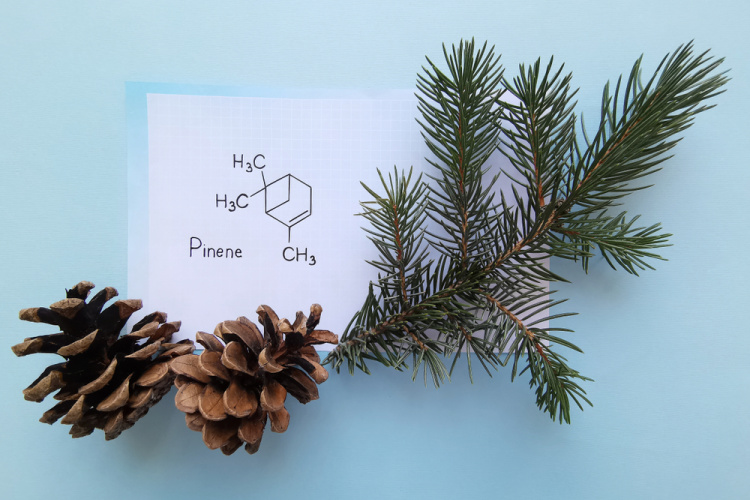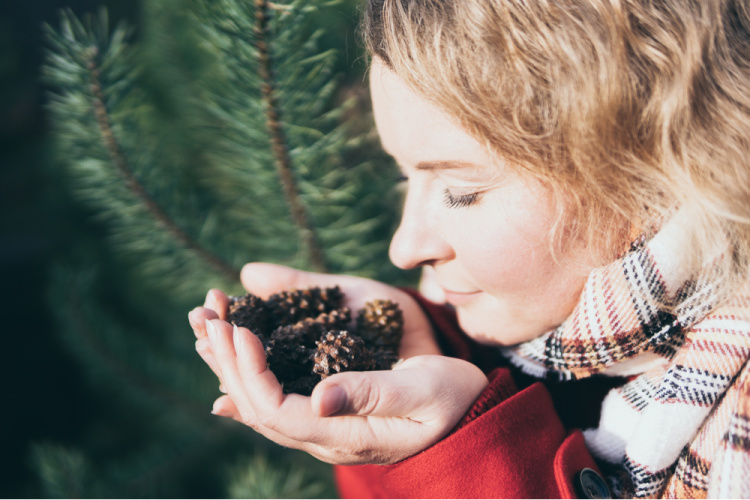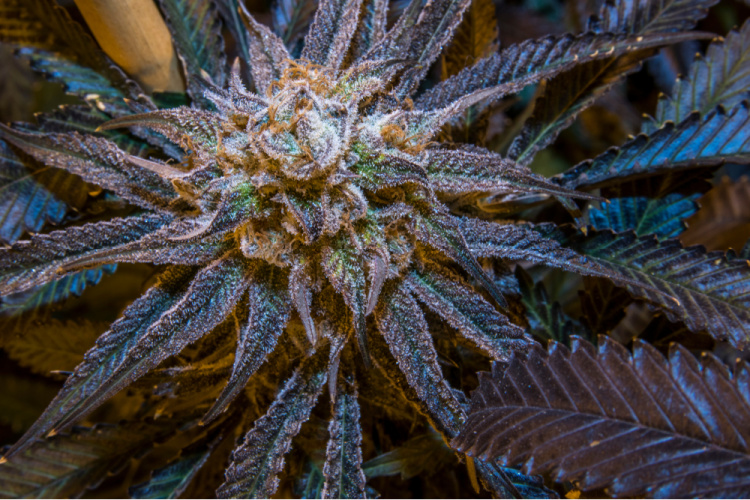It’s a safe guess you’re familiar with cannabinoids, the major “active ingredients” found in the cannabis plant. The cannabinoid family includes some you’re probably familiar with, including THC and CBD, but they’re far from the whole story. Cannabis—along with countless plants, herbs, trees, and other natural products—contains another very special class of compounds called terpenes, including pinene, the focus of today’s post.
Terpenes are fragrant hydrocarbons—that’s just another way of saying “essential oils”—and they’re what give different strains of cannabis their specific aromas and flavors. But that’s not all: In addition to imparting their own aromatic characteristics, terpenes can exert powerful effects on our bodies and our minds.
As promised, today we’ll focus on pinene, the most abundant terpene in the world and one of the ten most important terpenes found in the cannabis plant.
The Pinene Terpene: What Does It Smell and Taste Like?
You probably won’t be surprised to learn that pinene has a distinctively piney or “Christmas tree” aroma. That should serve as a hint to other natural sources of pinene: Trees like pine and spruce, most obviously, but also rosemary, basil and even orange peel. Chemically speaking, there are two variants of the terpene: alpha-pinene and beta-pinene, but the alpha type—commonly shortened to “a-pinene”—tends to be more abundant in cannabis.

Many people describe the experience of sampling pure pinene as “like munching a handful of fresh pine needles.” While that sounds evocative, you might be better off nibbling some fresh rosemary or oregano instead. Or better yet, sampling strains high in pinene. Spicy, slightly sweet, fresh and woody, they’re among the most beloved in the world of cannabis.
Before we go much further, it’s important to note that terpenes such as pinene can occur in any type of cannabis, whether indica or sativa. Indica and sativa, of course, are the primary subtypes of the cannabis plant. Sativas are often described as being uplifting, energizing, and cerebrally stimulating. Indicas, on the other hand, are categorized as imparting a heavy, relaxing “body high.”
While there’s disagreement as to how botanically accurate these terms are, here at Green Goods, we think they’re useful tools to describe some of the cannabis plant’s most common effects.
Pinene Benefits: What Can Pinene Do For Us?
Have you ever noticed that breathing in the scent of fresh fir trees has a pleasingly soothing effect on your breathing? That’s no accident; pinene has an anti-inflammatory effect on us, especially when it comes to our respiratory functions. Inhaling cannabis with a high pinene content—particularly using a vape pen or vaporizer, which doesn’t actually burn plant matter—may impact inflammatory responses in the lungs and airways, such as asthma.

Similarly, you may have noticed a pleasing and refreshing mental effect when breathing in fresh-cut conifer trees. In part because pinene readily penetrates the blood-brain barrier, it tends to protect certain transmitter molecules; the effect being that exposure to this terpene makes one feel more lucid and improves memory and attention. This was suggested by a study demonstrating that certain terpenes help diminish the short-term memory impairment associated with THC.
It’s important to note here that any given cannabis strain—that is, what those in the larger plant-growing world often rightly call a “cultivar” or “cultivated variety”—contains many terpenes. While pinene is rarely the dominant terpene in a given strain, it’s commonly the second most abundant one, acting in concert with other terpenes and cannabinoids in what’s called the “ensemble effect” (or sometimes the “entourage effect”).
First posited by two Israeli professors—including Dr. Raphael Mechoulam, who had previously identified THC back in 1964—the theory behind the ensemble effect is that various cannabis compounds, including the pinene terpene, work in harmony to create even more impactful medical benefits than they would on their own. That’s why many researchers today believe that using whole-plant medications tends to deliver stronger results than isolated compounds. You can learn much more about the ensemble effect at this introductory article.
Pinene Terpene Strains: A Curated List
Many cannabis strains contain a-pinene, and a good rule of thumb is to follow your nose. You’ll likely smell the presence of this powerful terpene. Here are a few popular strains of marijuana that typically contain high levels of alpha-pinene:

- Grape Ape is a musky and potent high-THC indica. With a pronounced grape flavor, a relaxing body high and a pungent, memorable scent, this strain delivers a powerful and long-lasting full-body experience.
- Harlequin is a popular strain for its high CBD content. It imparts a sativa-dominant uplift, often with a very mild euphoria. It’s mild enough for daytime activities while imparting gentle CBD-powered relaxation.
- ACDC is another favorite among the medical marijuana community, averaging around a 20:1 CBD/THC ratio. Its psychoactivity is barely perceptible, making this high-pinene strain a great choice for daily users who want to combat anxiety, pain and tension with subtle, sustainable relief.
- Blue Dream is a popular hybrid associated with a gentle euphoria and creative inspiration. If its resinous aromas are often buried by its strong blueberry scent, this strain typically delivers a potent hit of a-pinene.
- Dutch Treat is a favorite with the daytime-use contingent. As a classic sativa strain, it offers a fast-acting boost to mood and sociability that settles into a more relaxed experience.
- Jack Herer is one of the most legendary strains of all time—and one with an important backstory. Jack Herer is often described as imparting a “perfect blend” of cerebral and physical effects, inspiring a burst of creative energy and focus that make it popular for daytime use. You’ll probably recognize the flavors and aromas of earthy pine, thanks to its high pinene content!
The Pinene Terpene: Discover More at Green Goods Today
We hope today’s post inspires your curiosity about this truly essential terpene. If you’re interested in trying some for yourself, we can help! Start by finding your nearest Green Goods location to learn about the products available in your state and browse for strains high in terpene.
And if you have any other questions about the pinene terpene—or any other cannabis-related topics—we’re always here to answer your questions. Drop us a line!
Please note that qualifying conditions vary by state, and the information relating to qualifying conditions may not apply to cannabis patients in all states. Product availability also varies based on state program restrictions and rules, so the products discussed may not be available in all states. Be sure to check with your local Green Goods location about the products available in your state!
